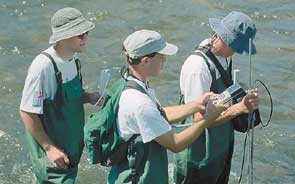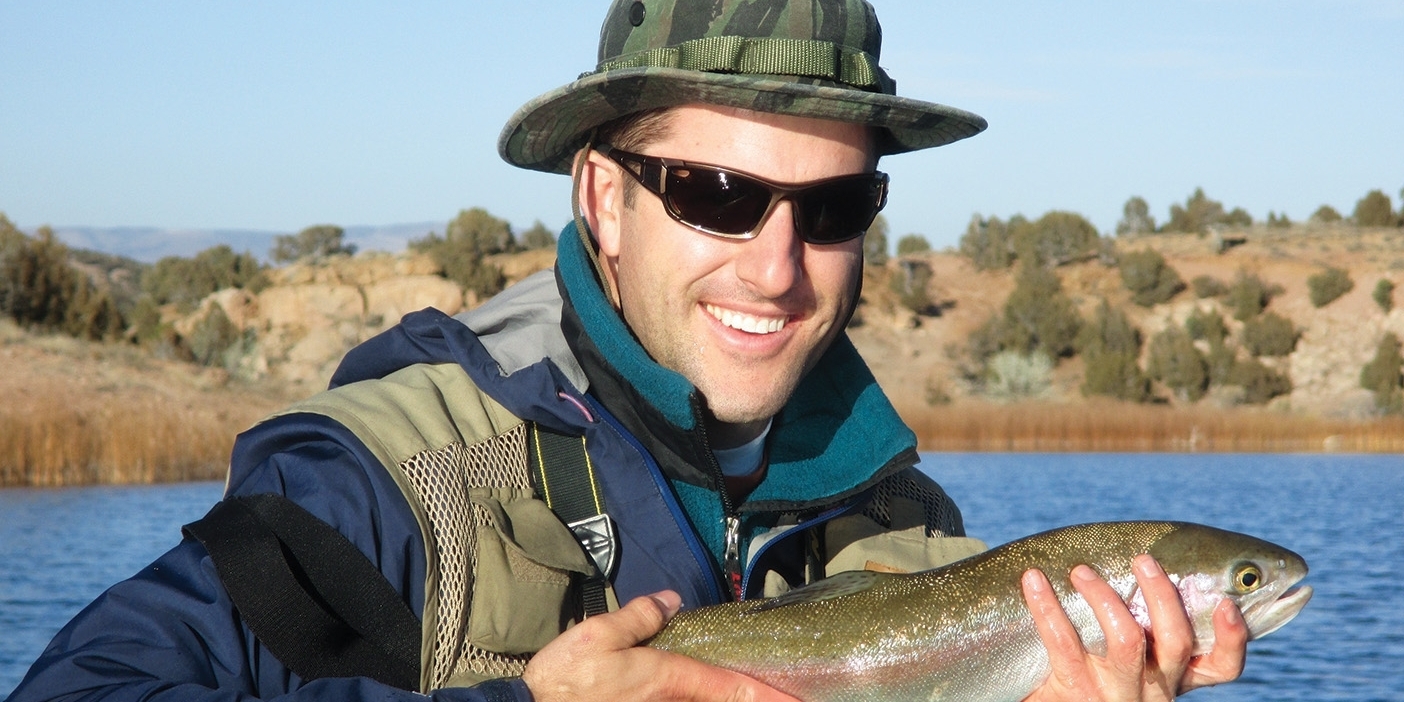In a soundproof Widtsoe Building lab, a female olomina from Panama is about to participate in something like a fish dating show. She’s placed in the center of a three-chambered tank, and male olominas, one the same species as her, one of a different olomina variety, are placed behind glass on either side. Biology PhD student Spencer J. Ingley (’15) watches closely as the female sizes them up and swims toward her choice. “We want to determine if there’s a possibility that she would choose a mate from an opposing species,” he says.
 With his olomina, Ingley is asking important questions about how genetic and behavioral traits help create new species—and he has the backing of a National Geographic Young Explorers Grant and a National Science Foundation fellowship totaling more than $125,000. The grants will allow Ingley to return to Panama to collect fresh olomina from high mountain streams; they’ll travel nearly 3,000 miles to BYU in Tupperware, flying as checked baggage.
With his olomina, Ingley is asking important questions about how genetic and behavioral traits help create new species—and he has the backing of a National Geographic Young Explorers Grant and a National Science Foundation fellowship totaling more than $125,000. The grants will allow Ingley to return to Panama to collect fresh olomina from high mountain streams; they’ll travel nearly 3,000 miles to BYU in Tupperware, flying as checked baggage.
Olomina species populate a variety of environments, making them perfect for Ingley’s research. Some species must dodge predators constantly while others choose to hang out upstream, away from bad guys. With biology assistant professor Jerald B. Johnson (MS ’95), Ingley has already found that species in different predation environments evolve different body shapes and behaviors. Now he hopes to discover how other traits, like boldness, affect species separation.
But how do you test a fish’s boldness? That’s where creativity—and a television—come into play. Ingley places an olomina among rocks and plants at one end of a tank. When the fish ventures out, a screen at the tank’s other end flips on and plays footage of a black cichlid fish attacking an olomina. “It’s basically a fish horror film,” says Ingley. The olomina, which changes color when frightened, runs for cover. Ingley times how long it takes the fish to muster the courage to emerge. Fish who venture out quickly often have a higher mortality rate in the wild, so they may need to evolve other ways to survive.
Since such fish films are limited, Ingley and other researchers have teamed up with a Nintendo video game designer and a 3-D animator from DreamWorks to create a high-tech alternative: anyFish, a realistic computer-generated fish avatar whose size, coloring, and behavior can be controlled by researchers.
Though fishy dating tests, horror movies, and video games sound zany, Ingley says they play an important role. “It’s very helpful to be able to think outside the box when you’re trying to design your experiments,” he says. “It contributes to the excitement, and it makes good science as well.”
Another National Geographic Grant
In addition to Spencer J. Ingley’s (’14) 2011 Young Explorers Grant, the National Geographic Society (NGS) honored another BYU biology PhD student last year: Cesar A. Aguilar (’14). Studying with Professor Jack W. Sites Jr., Aguilar received a $15,000 NGS/Waitt grant to fund field studies of several species of Liolaemus lizards in Peru. Many unidentified Liolaemus varieties are thought to populate the country’s northern range. After capturing lizards with his bare hands—which has led to his fair share of bites—Aguilar carefully collects lizard DNA to study back at BYU. “I may be able to double the number of known [northern] species,” says Aguilar. Such discoveries come with naming rights, so Aguilar may have to get creative—Liolaemus dicktracy and Liolaemus erroneus are already taken.









